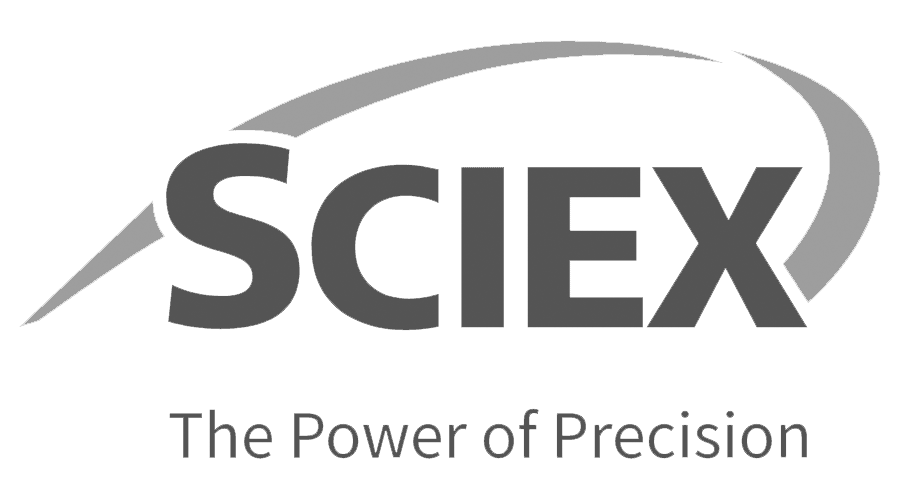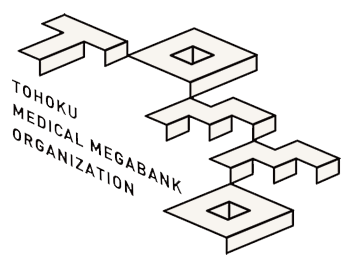
Pan-cohort studies – The future of population health
Speakers, sessions, abstracts
Connecting science globally
October 12th, 2022 | 40+ Speakers, 3 locations, 1 big event, in-person and digitally
Jump to Sendai event
Jump to Munich event
Jump to Boston event
Programme overview – Japan session
08:45 a.m. – 17:15 p.m. JST
Via Zoom
Keynote lecture – 09:00 a.m. JST
02:00 a.m. CET | 20:00 p.m. EST (-1)

Hitoshi Nakagama, Prof.
President of the National Cancer Center,
Tokyo | Japan
Keynote lecture – 16:35 p.m. JST
09:35 a.m. CET | 03:35 a.m. EST

Masayuki Yamamoto, Prof.
Executive Director of Tohoku Medical Megabank Organization; Tohoku University,
Sendai | Japan
Session – Biobanks – 09:25 a.m. JST
02:25 a.m. CET | 20:25 p.m. EST (-1)

Seizo Koshiba, Prof.
Advanced Research Center for Innovations in Next-Generation Medicine, Tohoku University
Sendai | Japan
Tohoku Medical Megabank Project: Cohort and Biobank
Tohoku Medical Megabank (TMM) Project conducts two prospective cohort studies for more than 150,000 individuals in Japan. One is the TMM Community-Based Cohort Study targeting adult residents, and the other is the TMM Birth and Three-Generation Cohort Study targeting pregnant women with their infants, husbands, and both grandparents. We have already finished the baseline surveys (2013-2017) and the first repeat surveys (2017-2021) and are now conducting the second repeat surveys from 2021. During the surveys, we have been collecting many kinds of data (questionnaires [lifestyles, medical history, etc.], blood and physiological tests, MRI, etc.) and samples (plasma, serum, urine, etc.) from participants. The collected information and samples are stored to the TMM Biobank system, including the large scale sample storage system and the database system (dbTMM), and are distributed to academia and industry. TMM also conducts genome and omics analyses of the collected cohort samples. For genome analysis, TMM has already finished DNA array analysis for almost all adult participants and are now conducting whole genome sequence (WGS) project for 100K participants (more than 50K WGS have already finished). For omics analysis, TMM is conducting many kinds of omics analysis; metabolome, transcriptome, methylome, and metagenome. Especially, we have already finished plasma metabolome analysis for more than 50K participants. All obtained genome and omics data are also stored to our biobank system and are also distributed. Moreover, statistical information of our genome and omics data is freely available from our public database, Japanese Multi-Omics Reference Panel (jMorp). I will talk recent advances of our TMM project.

Chang Chung-ke, Ph.D.
Chief Administrative Officer and Chief Information Security Officer of Taiwan Biobank,
Taipei | Taiwan
Taiwan Biobank resources for population health research
The Taiwan Biobank was established as a national infrastructure for biomedical research. It currently boasts a population cohort of over 170,000 participants complete with blood plasma and urine biospecimens, and results from physical measurements, lifestyle questionnaires and serum/urine biochemical tests. The Taiwan Biobank also collects several types of omics data, including whole genome genotype, whole genome sequence, DNA methylation status, plasticizer metabolites and nuclear magnetic resonance-based metabolomics. In this talk, I shall describe some interesting metabolomic characteristics of our population cohort. I shall also showcase a few examples where the vertical integration of metabolome, genome and phenome data provided new insights into the health of the Taiwanese population, including common diseases and cancer. I will close the presentation with a discussion about possible opportunities for future pan-cohort collaborations using Taiwan Biobank resources.

John Chambers, Prof.
Lee Kong Chian School of Medicine for Nanyang Technological University | Singapore
Singapore National Precision Medicine Program
The abstract will be posted here once available

Takayuki Morisaki, Prof.
BioBank Japan, The Institute of Medical Science, University of Tokyo | Japan
BioBank Japan: 20 years of disease-oriented cohort study towards genomic and multi-omic study
In 2003, BioBank Japan (BBJ) started developing one of the world’s largest disease biobanks, recruiting a total of about 270,000 patients representing 440,000 cases of 51 common diseases with 12 medical institutions located throughout Japan. BBJ has collected DNA, serum, medical records including yearly collection with their consent for genomic and clinical research. These biological samples and data are widely distributed and used by researchers. Large-scale genomic analyses, omics analyses including whole genome sequencing and biomarker analyses have been performed. As a result, more than 600 papers based on BBJ’s samples and information have been published in international scientific journals, presenting research findings concerning, for example, the association between genetic information of Japanese individuals and the onset of various diseases. Discoveries have been reported of genes related to diseases and drugs as well as physical traits and biomarkers. Currently, BBJ is especially focusing on genomic and muli-omic study using genome/metabolome/proteome data.
Session – Technology – 11:20 a.m. JST
04:20 a.m. CET | 22:20 p.m. EST (-1)

Maryan Zirkle, MD
Executive Director, BRAINCommons of Cohen Veterans Bioscience,
New York | USA
BRAINCommons: A research and discovery platform paving the way for pan-cohort analysis
We are in a new era of data-driven biomedical informatics research, where organizations with powerful data acquisition technologies are generating high-quality, health data at increasing scales. Our primary challenge today is harnessing the combined power of the data for accelerated discovery and increased impact. Cohen Veterans Bioscience (CVB), a 501(c)3 nonprofit biomedical research and technology organization developed the BRAINCommons™ (BC), a next-generation, cloud-based research platform that enables data-driven discovery across disparate cohorts or datasets. Leveraging interoperability approaches that harmonize content and format of data from multiple studies or projects, we increase the value, enabling the creation of new cohorts for additional analysis and discovery of meaningful insights. The BC is in the early stages of implementation, currently hosting 15 cohorts with more than 8,000 study participants with Parkinson’s Disease (PD), Post-traumatic Stress Disorder (PTSD) and/or Traumatic Brain Injury (TBI) from US, Canada, Europe and beyond. CVB, a primary customer of the BC, sponsors several deep-phenotyping clinical studies, including a multi-site National Normative Neuroimaging Library (NNL) study conducted at three Academic Medical Centers. This study has a target enrollment of 3000 individuals with a full battery of brain MRI sequences, biosample collection, and over 25 different clinical assessments for each individual. In this multi-year study, data has already been collected from over 1400 individuals and the raw imaging files and clinical data are being housed in the BC.

Jerzy Adamski, Prof.
Chief Scientific Officer of Metaron Diagnostics, Munich | Germany
National University of Singapore | Singapore
Study design for metabolomics research: challenges in biomedicine
Only robust and validated biomarkers are of interest in the diagnostics and theranostics. Metabolomics research facilitates development of biomarkers for precision medicine. During a study design there are several specific requirements which are a prerequisite for successful study in biomedicine. Critical components include power calculation, consideration of confounders, definition of controls or references, aspects of ethnicity and environmental impact, further sample randomization for analytics and the choice of analytical methods. These interlaced components if not included may cause severe overfitting and even loss of association with phenotype.

Eiji Hishinuma, Ass. Prof.
Advanced Research Center for Innovations in the Next-Generation Medicine, Tohoku University
Sendai | Japan
Large-scale cohort study using targeted metabolomics kit and its application to gynecological cancer biomarker discovery
Metabolomics, a method for comprehensive analysis of metabolites in vivo, is considered to reflect human phenotypic variation relatively well and has contributed to biomarker discovery research. However, there have been very few examples of its application to clinical practice. Therefore, it is very important to clarify in vivo metabolome profiles by utilizing samples accumulated in large-scale cohort studies for the identification of disease biomarkers. The Tohoku University Tohoku Medical Megabank Organization (ToMMo) collects a wide variety of samples from large-scale cohort studies and stores them in a biobank, where the plasma samples are used for metabolome analysis. To date, plasma metabolome analyses using the targeted metabolomics kit have been performed on several thousand individuals, and the results are published in ToMMo’s database, the Japanese Multilayer Omics Reference Panel (jMorp). Recently, the Tohoku University Clinical Biobank was established, and specimens derived from patients at Tohoku University Hospital have also been collected, and metabolomic analysis of these specimens is also being conducted. In this presentation, we describe the results of a study on the analysis of ToMMo plasma samples using the targeted metabolomics kit and the evaluation of the quantitative values obtained. In addition, we present the results of a comparison of gynecological cancer samples from the Clinical Biobank with cohort samples to identify differences in plasma metabolomic profiles and biomarkers associated with disease prognosis. Our research demonstrated that plasma metabolome analysis is useful not only for cancer diagnosis, but also for predicting prognosis and evaluating of chemotherapy response with the variation of metabolites.
Session – (Multi)Omics – 13:25 p.m. JST
06:25 a.m. CET | 00:25 a.m. EST

Karsten Suhre, Prof.
Director of Bioinformatics Core of Weill Cornell Medicine,
Doha | Qatar
mGWAS: A powerful approach for metabolic fine mapping of genetic risk loci
In the last 20 years genome wide association studies (GWAS) have discovered a great number of associations between genetic variance and (clinical) phenotype. Extending this concept with metabolomics (Mx) data into mGWAS leads to a powerful, but still undervalued, approach to qualify genomic variance by druggability (phenotype converting effect size) and to shift from association to functional relationship.
Starting in 2008 with an mGWAS in merely 300 individuals (Gieger et al., PLoS Genetics, 2008), the approach matured with over 80 mGWAS studies published to date: http://www.metabolomix.com/list-of-all-published-gwas-with-metabolomics/. As of 2022, genomic (Gx) and metabolomic data at the scale of large population-based cohort are available, with over 100,000 samples from the UK biobank based on Gx and NMR-based Mx data.
In this presentation we demonstrate that Mx association profiles can serve as surrogate endpoints for future drug trials and Mendelian randomization studies, as shown for lipid-lowering treatment and incident myocardial infarction, pointing to a target with currently unexploited therapeutic potential.
Mx association profiles from mGWAS provide a resource for the functional interpretation of lipid risk loci and their evaluation as potential drug targets in the prevention and treatment of ASCVD.

Yukinori Okada, Prof.
Department of Statistical Genetics, Osaka University Graduate School of Medicine
| Japan
Statistical genetics, disease biology, drug discovery, and personalized medicine
Statistical genetics is a research field that evaluates causality of human genetic variations on diseases, using statistical and bioinformatics approaches. Recent developments of sequencing technologies have provided human disease genome data of hundreds of thousands of the subjects, and successfully identified comprehensive catalogues of genetic susceptible loci. However, little is known regarding how to develop methodology to integrate large-scale human genome data with diverse biological resources. We have developed such methods and applied to a pioneering example of large-scale genetic association studies on a variety of human complex traits. Tran-layer omics analysis identified the cell types and microbiomes implicated in disease biology. Network analysis between the disease risk genes and the drug target genes could identify novel candidates of drug repositioning. Integration of cell type-specific gene expression profiles estimated from GWAS with compound perturbation databases can pinpoint novel therapeutic targets and compounds. Application of the machine learning methods into population genome data can classify the samples without prior biological information. These results should empirically show the value of statistical genetics to dissect disease biology, novel drug discovery, and personalized medicine. Finally, we would like to introduce our activity on young researcher developments (“Summer school of statistical genetics” in Osaka Univeristy).

Vivian Viallon, Ph.D.
Nutrition and Metabolomics Branch of the International Agency for Research on Cancer (IARC),
Lyon | France
Pan-cancer analysis of pre-diagnostic blood metabolite concentrations in the European Prospective Investigation into Cancer and Nutrition
Background: Epidemiological studies of associations between metabolites and cancer risk have typically focused on specific cancer types separately. Here, by leveraging metabolomics data available in a large international multi-centric cohort study, we designed a multivariate pan-cancer analysis to identify metabolites potentially associated with multiple cancer types, while also allowing the investigation of cancer type-specific associations .
Methods: We analyzed targeted metabolomics data available for 5,828 matched case-control pairs from cancer-specific case-control studies on breast, colorectal, endometrial, gallbladder, kidney, localized and advanced prostate cancer, and hepatocellular carcinoma nested within the European Prospective Investigation into Cancer and Nutrition (EPIC) cohort. From pre-diagnostic blood levels of an initial set of 117 metabolites, 33 cluster representatives of strongly correlated metabolites, and 17 single metabolites were derived by hierarchical clustering. The mutually adjusted associations of the resulting 50 metabolites with cancer risk were examined in penalized conditional logistic regression models adjusted for body mass index, using the data shared lasso penalty.
Results: Out of the 50 studied metabolites, (i) six were inversely associated with risk of most cancer types: glutamine, butyrylcarnitine, lysophosphatidylcholine a C18:2 and three clusters of phosphatidylcholines (PCs); (ii) three were positively associated with most cancer types: proline, decanoylcarnitine and one cluster of PCs; and (iii) 10 were specifically associated with particular cancer types, including histidine that was inversely associated with colorectal cancer risk, and one cluster of sphingomyelins that was inversely associated with risk of hepatocellular carcinoma and positively with endometrial cancer risk.
Conclusions: These results could provide novel insights for the identification of pathways for cancer development, in particular those shared across different cancer types.

Motoki Iwasaki, Ph.D.
Director of Epidemiology Research for the National Cancer Center,
Tokyo | Japan
Plasma biomarker studies on cancer within the Japan Public Health Center-based prospective Study
The Japan Public Health Center-based prospective Study (JPHC study) conducted a baseline survey for 140 420 registered residents aged 40–69 years within 11 public health center areas nationwide in 1990–94. Five- and 10-year follow-up surveys were conducted to update information on lifestyle habits and health conditions. About 130 000 participants responded to at least one of the three questionnaire surveys and about 60 000 participants provided blood samples on at least one of the two sampling times. The subjects have been followed for vital status and the occurrence of cancer and other diseases. As of October 2021, 44 000 deaths have been documented, as well as 32 000 cases of cancer. In order to examine the association between plasma biomarkers and the risk of cancer, we applied both nested case-control and case-cohort design to the JPHC study. In this symposium, I will present several findings from both designs as examples. I will discuss about utilizing plasma biomarkers for identifying risk or predictive factors and implication of these findings for cancer etiology and prevention.
Session – Pan-cohort studies | Precision medicine – 15:20 p.m. JST
08:20 a.m. CET | 02:20 a.m. EST

Siqi Liu, Prof.
Chief Scientist Protein Sciences of BGI,
Shenzhen | China
Evaluation of spike protein epitopes by assessing dynamics of the humoral immune responses in the moderate COVID-19
The coronavirus disease 2019 (COVID-19) pandemic is caused by a novel coronavirus called severe acute respiratory syndrome coronavirus 2 (SARS-CoV-2). The spike protein (S) of SARS-CoV-2 is a major target for diagnosis and vaccine development because of its essential role in viral infection and host immunity. Currently, the time-dependent responses of humoral immune system against various S protein epitopes are poorly understood. In this study, enzyme-linked immunosorbent assay (ELISA), peptide microarray, and antibody binding epitope mapping (AbMap) techniques were used to systematically analyse dynamic changes in the humoral immune responses against S protein in a small cohort of moderate COVID-19 patients that were hospitalized for approximately 2 months after the onset of symptoms. The recombinant truncated S proteins, target S peptides and random peptides were taken as antigens in the analyses. The assays demonstrated dynamic IgM- and IgG recognition against various S protein epitopes appearing patient-dependent patterns. Comprehensive analysis of epitope distribution along the Spike gene sequence and spatial structure of the homotrimer S protein demonstrated that most IgM- and IgG-reactive peptides were clustered in the accessible regions of accessible regions of the S1, S2 and RBD domains. Seven S peptides were recognized by the IgGs derived from the serum samples of all COVID-19 patients. The dynamic immune recognition signals from these seven S peptides were comparable to the entire S protein or the truncated S1 protein. Furthermore, in this cohort, individual patients demonstrated stable immune recognition to certain S protein epitopes throughout their hospitalization period. The dynamic characteristic of the humoral immune responses to S protein, therefore, has provided valuable information for further design of diagnosis and immunotherapy of COVID-19.

Makoto Suematsu, Prof.
Department of Biochemistry
School of Medicine for Keio University,
Tokyo | Japan
Imaging metabolomics reveals roles of reactive sulfur species in pancreatic cancer chemoresistance
Formalin-fixed-paraffin-embedded (FFPE) tissue defaults to a standard to diagnose malignancy but is inappropriate for detecting marker metabolites in situ. Post-operative frozen samples of pancreatic ductal adenocarcinoma (PDAC) were analyzed by imaging metabolomics (IM), imaging mass-spectroscopy and gold-nanoparticle-based SERS imaging, which cover large areas of cancer and stromal regions. IM shows that polysulfide occurs in all regions concurrently with stromal enrichment of cystine, a substrate of reactive sulfur species. In FFPE samples from 120 PDAC patients, immuno-staining polysulfide-generating enzymes revealed that cystathionine gamma-lyase (CSE) expressed in cancer-associated fibroblasts (CAF) serves as an independent factor worsening post-operative disease-free and overall survivals. Polysulfide renders cancer cells to induce fascin-actin-bundling protein-1 to stimulate the cancer cell motility. These results suggest that polysulfide serves as a marker inducing CAF-mediated cancer cell activation.

Toru Takebayashi, Prof.
Preventive Medicine and Public Health
School of Medicine for Keio University,
Tokyo | Japan
Metabolomics and cardiometabolic risk: Findings from the international collaborative analysis with the Tsuruoka Metabolomics Cohort Study
Burden of non-communicable diseases differs country-by-country, and various aspects such as environmental, cultural and genetic factors could explain these differences. This is true for metabolite profiles. International collaborative analysis of metabolomics epidemiology can contribute to find out common and/or unique metabolites/metabolic pathways reflecting genetic and/or cultural backgrounds.
We initiated Tsuruoka Metabolomics Cohort Study (TMCS) enrolling 11,002 community-dwelling adults in Tsuruoka City of Japan in 2012, in which biospecimen sampling and analytical procedures has been standardized and optimized for metabolomics as a large-scale cohort. Plasma and urinary metabolites were quantified by CE/MS for charged metabolites and LC/MS for others at baseline and thereafter. Reproducibility and validity of our metabolite measurements for both plasma and urine have been confirmed using QC samples.
Two comparative studies with Baltimore Longitudinal Study of Aging (BLSA) and TMCS have been done to explore blood metabolite signature of metabolic syndrome (MetS) using our CE/MS (study 1) and biocrates platform (study 2). In study 1, we identified 18 metabolites shared between TMCS and BLSA among top 25 most significant metabolites in each cohort, and the majority of which were classified as amino acids including branched-chain amino acid metabolism, glutathione production, aromatic amino acid metabolism, gluconeogenesis, and the tricarboxylic acid cycle. In study2, we found that metabolites from the phosphatidylcholines-acyl-alkyl, sphingomyelin, and hexose classes were significantly associated with MetS and risk factor outcomes in both cohorts.
TMSC is also a member of COMETs, and the result of an international pooled analysis of circulating trimethylamine N-oxide (TMAO) of 16 population-based studies indicated the associations of circulating TMAO with high intakes of animal protein across populations and that with multiple cardiometabolic risk factors, including impaired renal function and poor glycemic control.
We will discuss what the commonalties and differences across cross-ethnic/cultural comparison we observed were and how to move international collaboration across metabolomics cohorts forward.
Programme overview – Munich session
10:00 a.m. – 18:30 p.m. CET
in person and via Zoom
Klinikum Großhadern | Hörsaal 3
Keynote lecture – 10:15 a.m. CET
17:15 p.m. JST | 04:15 a.m. EST

Christof von Kalle, Prof.
Director of the joint Charité and BIH Clinical Study Center (CSC) of Universitätsmedizin Berlin | Germany
Keynote lecture – 17:50 p.m. CET
00:50 a.m. JST (+1) | 11:50 a.m. EST

Annette Peters, Prof.
Director of the Institute of Epidemiology (EPI) of Helmholtz Center Munich | Germany
Session – Biobanks – 10:40 a.m. CET
17:40 p.m. JST | 04:40 a.m. EST

Naomi Allen, Prof.
Chief Scientist for UK Biobank,
Oxford | United Kingdom
UK Biobank: a unique global study for health-related research and discovery science
With its unique combination of scale, depth, maturity and accessibility, UK Biobank is enabling researchers worldwide to perform innovative health-related research. This talk will provide key information about this landmark study, highlight recent and future enhancements to the resource, and new ways in which it is democratising access via the new cloud-based Research Analysis Platform.
UK Biobank is a prospective cohort study of 500,000 people that has integrated large-scale genomic data (in all participants) and deep phenotyping data (including lifestyle factors, physical measures and multi-modal imaging) with long-term follow-up of health outcomes through linkage to electronic health records. The recent addition of detailed genomic sequencing data plus large-scale metabolomic and proteomic data has created an even more powerful resource, which will enable a better understanding of disease biology and will support innovative drug development for more effective therapies. To accommodate the rapid growth of the resource and to enable more researchers across the world to access these data without limitations of transferring, collating, storing, and accessing data at this scale, UK Biobank has launched an cloud-based Research Analysis Platform, democratising access to large-scale compute and novel technologies. The availability of financial research credits for early-career researchers and those from low-income and middle-income countries is further democratising access to this unique resource.
Ready access to the combination of in-depth genomic, imaging, and other health information from 500,000 UK Biobank participants is enabling researchers worldwide to advance discovery science and improve human health.

Marc Gunter, Ph.D.
Head of Nutrition and Metabolism Branch of the International Agency for Research on Cancer (IARC),
Lyon | France
EPIC: A pan-European Cohort for the discovery of the causes of cancer and other chronic diseases
The European Prospective Investigation into Cancer (EPIC) is a pan-European cohort comprising more than 520,000 individuals enrolled from ten countries (Norway, Sweden, Denmark, United Kingdom, The Netherlands, Germany, France, Italy, Spain and Greece) who have been followed since the mid-to-late 1990s. To date, more than 80,000 participants have developed cancer making EPIC one of the world’s largest cohorts for studying the aetiology of cancer. Diagnoses of other chronic diseases including diabetes, cardiovascular diseases as well as neurological diseases such as ALS, Parkinson’s and Alzheimer’s diseases have also been recorded. The original focus of EPIC was to capture variation in diet and lifestyle across Europe and to understand potential links with cancer development. A such, detailed information was collected from participants on dietary habits, physical activity and anthropometry. Baseline blood samples were collected from approximately 350,000 participants and aliquots are stored at the International Agency for Research on Cancer (IARC) and at the local EPIC centres. Since its inception EPIC has become an important international resource for the discovery of new aetiological markers and pathways as well as biomarkers for early detection of cancer. Metabolomics data has been generated on >10,000 participants and a growing proportion of the cohort have genomics, proteomics and other targeted biomarkers available. This presentation will provide an overview of the EPIC cohort summarizing available resources, major findings and ongoing projects with a focus on the application of metabolomics profiling to understand new causes of cancer.

Henry Völzke, Prof.
Institute for Community Medicine of the University of Greifswald | Germany
Germany: The Cohort Country
Since the 1980ies, multiple regional and national cohort studies have been established in Germany. The presentation will reflect German cohort research. Special focus will be laid on the German National Cohort (NAKO) and the Study of Health in Pomerania (SHIP), which can be regarded as major sources for biomarker research.
Session – (Multi)Omics – 12:45 p.m. CET
19:45 p.m. JST | 06:45 a.m. EST

Claire Steves, Ph.D.
Ageing and Health for King’s College London | United Kingdom
Cohort studies in the digital era: use of time-series tracking and experimentation in TwinsUK and beyond
TwinsUK is one of the most deeply phenotyped and assayed twin cohorts in the world, with longitudinal data collection going back 30 years. TwinsUK data initially contributed to genetic consortia and was the seventh most used datasets in the world. TwinsUK has then pioneered the use of many omics in relation to epidemiology of ageing traits and diseases, including epigenetics, transcriptomics and metabolomics. Over the last 5 years we have used time-series of clinical and biological data in response to experimental challenges to bring new insights into vulnerability to disease. Today I will describe some of these dynamic phenotyping studies, including the Predict study, and how this led to the capability to measure time-series data on a massive scale, across the UK over the COVID-19 pandemic. This work on the COVID symptoms Study, in collaboration with ZOE, led to several world firsts in the understanding of the disease. Within the TwinsUK cohort, during the COVID pandemic we have used novel approaches to capture the social, psychological and biological impact of both COVID itself, and measures used to address it, which will form the basis of collaborative work on the long term impact on health and wellbeing. As well as using such natural ‘experiments’ we have demonstrated that experiments within the cohort setting can add unique insight to the major challenges of our time.

Stefan Lorkowski, Prof.
Nutritional Biochemistry of University Jena | Germany
tbd - on (multi)omics
The abstract will be posted here once available.

Moritz von Scheidt, Ph.D.
DigiMed Bavaria of the German Heart Centre Munich | Germany
DigiMed Bayern - digitized, personalized Medicine in Atherosclerosis
The abstract will be posted here once available.

Michael Knoflach, Prof.
VASCage Center for Vascular Ageing & Stroke and Department of Neurology for the Medical University of Innsbruck | Austria
Lessons learned from large clinical cohorts - Experience from the VASCage consortium
VASCage is Competence Centers for Excellent Technologies (COMET) funded by the Austrian Research Promotion Agency focusing on vascular ageing and stroke. One core element of this research company is the central biobank with collection of biosamples with detailed clinical annotations. This talk will give brief overview over problems, pitfalls and strengths of conducting clinical cohort research.

Maik Pietzner, Ph.D.
Computational Medicine, Berlin Institute of Health at Charité – Universitätsmedizin Berlin | Germany
Insights from large-scale, multi-omic cohorts
Profiling small molecules circulating in blood at scale allows unprecedented insights in disease aetiology when done in large prospective cohorts and coupled with DNA sequence variation. In this talk I will give an overview about our recent work linking about 1000 metabolites to the incidence of 27 diverse diseases spanning multiple clinical specialties. I will demonstrate, that while we see hundreds of metabolites to be prospectively associated with disease risk and all-cause mortality there is little specificity in metabolite-disease associations with more than two-thirds of metabolites associated with two or more diseases. We traced these finding back to common antecedents of multimorbidity, the presence of multiple chronic diseases in the same patient. In the second part of the talk, I will provide a brief dive into the genetic determinants of blood metabolite levels among >20,000 participants, to finally address the questions whether metabolite – disease associations are cause or consequence by presenting a phenome-wide ‘genetic metabolic load’ study in more than 300,000 participants.

Gabi Kastenmüller, Ph.D.
Institute of Computational Biology of Helmholtz Center Munich | Germany
From multi-omics associations to molecular networks - making big results accessible
The abstract will be posted here once available.

Jan Baumbach, Prof.
Institute for Computational Systems Biology of University of Hamburg | Germany
Privacy-preserving omics in medicine
Large-scale omics data analyzed by artificial intelligence (AI) technology is finding its way into the clinic to revolutionize our approach to medicine as a whole. Beyond personalized medicine, AI-driven medical data profiling is leaving massive footprints – from drug repurposing to a mechanistic redefinition of diseases. To move away from organ- and symptom-based disease descriptors to clinically actionable mechanistic approaches, computational systems and network medicine emerged. We will introduce the field, discuss current approaches and pitfalls as well as potential future avenues. Finally, we will introduce privacy-preserving AI and machine learning technology working on distributed medical data to extract predictive systems medicine profiles, specifically from highly sensitive genomics and transcriptomics data.

Jan Krumsiek, Prof.
Institute for Computational Biomedicine of Weill Cornell Medicine,
New York | USA
Pan-Cohort Multi-Omic Signatures in Health and Disease
In this presentation, I will discuss various research projects related to multi-omic signatures spanning across population and patient cohorts. (1) We will talk about how variational autoencoders extract universal metabolomic components from the TwinsUK cohort, and how these components correlate with disease parameters in independent multi-ethnic disease cohorts. (2) In several COVID-19 related projects, we used multi-omics data to gain insights into the complicated pathophysiology of this novel disease and develop models for the prediction of outcome severity in the hospital. (3) In Alzheimer’s d disease projects, we are integrating data from brain and the periphery for a better understanding of the disease and the development of novel therapeutic leads. (4) We have assembled a combined metabolomic/transcriptomic cohort of over 1,000 cancer tissue samples, which provide deep insights into the co-regulation of these two omics layers. (5) Finally, I will present an outlook on comparative oncology, where we perform an integrated metabolomic analysis of human- and dog-based lymphoma data.

Alain van Gool, Prof.
Personalized Healthcare of Radboud University Medical Center,
Nijmegen | Netherlands
The future of population health: learning lessons from personalized healthcare
We have reached a fantastic period in biomedical science. Exponential developments in molecular laboratory technologies such as next generation sequencing and mass spectrometry have enabled us to obtain increasing insights in the molecular components of human biology and their interactions. Novel personalized diagnostics and high precision therapies that modulate selected disease mechanisms are now driving the new paradigm of precision medicine. The parallel strong developments in digital biomarker platforms like wearables and apps further drive the personalized aspect of health management, even towards prevention of un-health. Collectively, we now aim to translate interdisciplinary research to knowledge, understanding and actionable decisions for people to maintain and/or improve health, both at the population as on the individual level.
However, while embarking on the road towards precision medicine and health, we are rediscovering that human physiology in combination with environmental factors is a highly complex system and that we need multiple viewing angles to begin to understand the complexity, identify its key nodes and define optimal therapeutic approaches. To innovate to the next level, we need to be fully aware of the many lessons learned thus far in population health and personalized health, and use these insights to translate novel capabilities to daily practice.

David Wishart, Prof.
The Metabolomics Innovation Centre (TMIC) of University of Alberta,
Edmonton | Canada
Why targeted metabolomics is essential for population health
In this presentation I will describe the benefits of using targeted, fully quantitative metabolomics for conducting population health studies. Metabolomics can be divided into two camps: untargeted and targeted approaches. Untargeted metabolomics emphasizes coverage over quantification. Targeted metabolomics emphasizes quantifcation over coverage. Currently, metabolomics is experiencing a disturbing shift towards untargeted methods and away from absolute quantification. This is dangerous. To indicate why this is dangerous, I will breifly describe the challenges that the field of proteomics faced when it moved completely towards untargeted approaches and the consequences that this “collective” decision had to the field. To counter this story of caution, I will also describe some of the beneifts of performing absolute quantification in metabolomics. Specifically, I will show how quantification improves reproducibility, how targeted metabolomics improves speed and reduces costs and how targeted metabolomics often exceeds the coverage obtained by untargeted methods. I will also highlight how targeted metabolomics is required for ISO and CLIA certification, how the the discovery of biomarkers can be simplified with targeted metabolomics and why the translation of discoveries to the clinic and for populatio health studies is far easier with targeted metabolmics than untargeted metabolomics. I will briefly provide some examples of how we have used targeted metabolomics or the data from targeted metabolomics to impact population health.
Programme overview – USA session
08:25 a.m. – 18:05 p.m. EST
in person and via Zoom
The Joseph B. Martin Conference Center at Harvard Medical School | Rotunda meeting room
Keynote lecture – 08:40 a.m. EST
21:40 p.m. JST | 14:40 p.m. CET

Leroy Hood, MD Ph.D.
CEO of Phenome Health and CSO of the Institute of Systems Biology,
Seattle | USA
Keynote lecture – 13:05 p.m. EST
02:05 a.m. JST (+1) | 19:05 p.m. CET

Rima Kaddurah- Daouk, Prof.
Medicine and Psychiatry, Duke University,
Durham NC | USA
Keynote lecture – 17:15 p.m. EST
06:15 a.m. JST (+1) | 23:15 p.m. CET

Jessica Lasky-Su, Ass. Prof.
Brigham and Women’s Hospital and Harvard Medical School,
Boston | USA
Session – Pan-cohort studies | Precision medicine – 13:30 p.m. EST
02:30 a.m. JST (+1) | 19:30 p.m. CET

Alessio Fasano, Prof.
Center for Celiac Research and Treatment at Mass General Hospital for Children,
Boston | USA
The Importance of The Intestinal Microbiota And Metabolomic Profiling In The Balance Between Health and Disease
Improved hygiene leading to a reduced exposure to microorganisms have been implicated as one possible cause for the recent ‘epidemic’ of chronic inflammatory diseases (CID) in industrialized countries. That is the essence of the hygiene hypothesis that argues that rising incidence of CID may be, at least in part, the result of lifestyle and environmental changes that have made us too “clean” for our own good. The gut microbiome consists of more than 100 trillion microorganisms, mostly bacteria. It has been just recently recognized that there is a close bidirectional interaction between gut microbiome and our immune system, and this cross talk is highly influential in shaping the host gut immune system function and, ultimately, shifting genetic predisposition to clinical outcome. This observation led to a revisitation of the possible causes of CID epidemics, suggesting a key pathogenic role of microbiome composition. However, to proper interpret the impact of microbiome composition and function in disease pathogenesis, prospective studies integrating metagenomic data with subjects’ genomic, metadata, and metabolomic profiling are necessary. This multi-omic analysis will be instrumental to develop strategies for personalized interventions (precision medicine) and even disease interception (primary prevention).

Melissa Miller, Ph.D.
Human Genetics, Internal Medicine Research Unit of Pfizer,
Boston | USA
Expanding our genetic resources beyond European populations
Large-scale population biobanks linked to genetic data have proved to be indispensable resources in the genetics community, enabling genetic discovery for diseases and phenotypes across a wide-spectrum of human biology. Many of the large population biobanks are pre-dominantly or exclusively of European populations.
The lack of diversity in genetics limits has several downstream implications. Most simply, this limits ability for discovery of novel genetic associations that may not be present in European populations. Lack of diversity in genetics can also lead to lack of translatability as many polygenic risk scores and precision medicine discoveries do not translate well to non-European populations. Taken together, these biases can exacerbate disparities in healthcare.
In recent years, multiple groups have started building biobanks and genetic cohorts in non-European populations (Mexican biobank, example in Africa). These efforts have already started to provide insight into genetic diversity in other regions of the world. More importantly, many of these new efforts have been developed as partnerships with an explicit goal of building resources and infrastructure in their countries and continents.

Eugene Melamud, Ph.D.
Principal Investigator of Calico,
San Francisco | USA
Predicting Longevity - Integrative Modeling of Plasma Biomarkers and Imaging Across Disease Space
There is a multitude of pathological conditions that affect human health, yet we currently lack a predictive model for most diseases, and underlying mechanisms that are shared by multiple diseases are poorly understoodIn this talk, we will present an epidemiological analysis of large-scale biomarker and imaging datasets to identify the most important factors prognostic of future disease and mortality. We will show how proximity in the biomarker-disease space is strongly related to the occurrence of disease comorbidity, suggesting biomarker profile patterns can be used for both predicting future outcomes
as well as a sensitive mechanism for detecting under-diagnosed disease states. We will further show that maintenance of calcium/phosphate homeostasis is a broad contributor to human aging rate and longevity.

Christiane Honisch, Ph.D.
SVP Diagnostics Devision (Evognostics) of Evotec, Hamburg | Germany
tbd - on Pan-Cohort studies | Precision medicine
The abstract will be posted here once available.

Chris Whelan, Ph.D.
Director of Data Science for Neuropsychiatry of Janssen,
Boston | USA
Proteomics at Population Scale: Insights from the UK Biobank Pharma Proteomics Project
This talk will provide an overview of the rationale for conducting high-throughput proteomics at population scale, including recent learnings from multiplex proteomic profiling of 54,306 individuals in the UK Biobank.

Nicole Bjorklund, Ph.D.
Translational Research & Development of Cohen Veterans Bioscience,
New York | USA
Fast-Tracking Precision Diagnostics And Tailored Therapeutics For Posttraumatic Stress Disorder & Traumatic Brain Injury
Despite extensive research to characterize psychological, genomic, and physiological risk and etiologic factors, there are currently few validated biomarkers for Posttraumatic Stress Disorder (PTSD) and Traumatic Brain Injury (TBI). Many potential biomarkers of PTSD & TBI published in the literature have not been independently replicated or advanced through a qualification process for regulatory approval and use. Developing biomarker-based diagnostics is essential to shifting the diagnosis & treatment of PTSD and TBI from a syndromic, symptom-based approach to a biological, mechanistically-based one that targets the effects of trauma at their molecular roots. Harnessing the advancements in multi-omics approaches along with cutting-edge data analytics can fast track the discovery and development of biomarker candidates. Cohen Veterans Bioscience (CVB), a 501(c)3 nonprofit biomedical research and technology organization has built critical infrastructure to support the development of biomarkers with the overarching goal of developing multi-modal mechanistic disease models. These resources include a biorepository housing specimens collected using best practices from well-characterized clinical cohorts, genomic & imaging analytics pipelines to support multi-omic approaches, BRAINCommons data sharing platform, and a fluid-based assay evaluation paradigm. A case-study of the approach will be presented along with results and takeaway lessons.

Gary Miller, Prof.
Department of Environmental Health Sciences of Columbia University,
New York | USA
Exposomics: measuring the environmental drivers of disease
Advances in high-resolution mass spectrometry (HRMS) have led to an increased ability to measure small molecules in biological samples. Although the field of metabolomics has progressed in its ability to measure endogenous small molecules, little attention has been given to the detection of environmental chemicals and other xenobiotics in human samples using these high-resolution approaches, which is termed exposomics. Dr. Miller will discuss the approaches his team has taken to better understand the environmental drivers of disease. Several major research initiatives have been established to identify causes of human disease with massive biobanks created. Development of techniques that can provide omic-scale analysis of environmental chemicals in biobanked samples could rapidly increase our understanding of environmental influences of disease. Dr. Miller’s group is focused on the use of liquid chromatography and gas chromatography-based high-resolution mass spectrometry to detect a wide range of xenobiotics and their metabolites. Along with colleagues in the EU-funded ESFRI project EIRENE, the team is working to develop an exposomic analysis framework for human clinical, translational, and population studies, which will allow seamless integration into multi-omic studies of human disease that can be used within large-scale efforts. Dr. Miller will discuss recent data from several studies that are underway.

Michael Snyder, Prof.
Department of Genetics, School of Medicine of Stanford University | USA
Big Data and Health
Recent technological advances as well as longitudinal monitoring not only have the potential to improve the treatment of disease (Precision Medicine) but also empower people to stay healthy (Precision Health). We have been using advanced multiomics technologies (genomics, immunomics, transcriptomics, proteomics, metabolomics, microbiomics) as well as wearables for monitoring health in 109 individuals for up to 12 years and made numerous major health discoveries covering cardiovascular disease, oncology, metabolic health and infectious disease. We have found that individuals have distinct aging patterns that can be measured in an actionable period of time as well as seasonal patterns of health markers. We have also explored the effects of fiber using multiomics profiling and profile dynamics during pregnancy. Finally, we have used wearable devices for early detection of infectious disease, including COVID-19 and built an alerting system for detecting health stressors that is scalable to the entire planet. We believe that advanced technologies have the potential to transform healthcare.
Connecting science globally
It is our vision to connect scientists globally to tackle the challenges modern medicine faces. Huge sample sets lie dormant and need to find the means to be explored. The Omics era with vast computational means opens new perspectives on data and on insights to be gained from datasets. Integration of different technologies makes collaboration more necessary.
With the second edition of this cohort event we are looking forward to expand into the physical spaces and strech the scope beyond metabolomics.
To enjoy the anticipation of this event you can watch the talks from 2021 Pan-cohort metabolomics event here (youtube) or take a look at the Pan-cohort metabolomics event 2021 abstract book.

2023©biocrates life sciences gmbh
All rights reserved
Privacy & Policy
Imprint
Terms & Conditions
Products
Targeted profiling kits
MxP® Quant 500
MxP® Quant HR Xpress™
AbsoluteIDQ® p400
HR AbsoluteIDQ® p180
Pathway specific kits
AbsoluteIDQ® Stero17
AbsoluteIDQ® Bile Acids
All biocrates products and services are intended
For research use only | not for use in diagnostic procedures.









